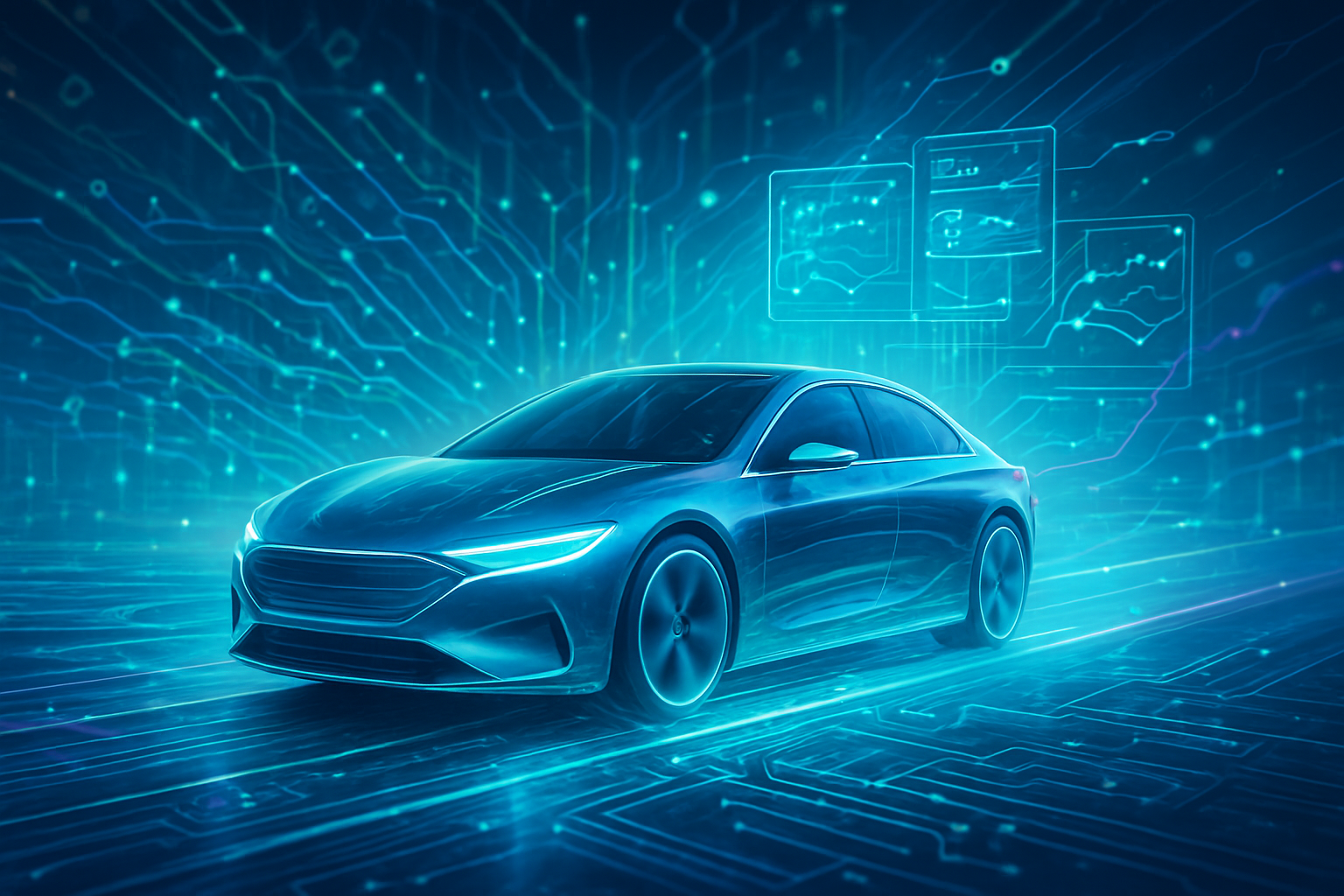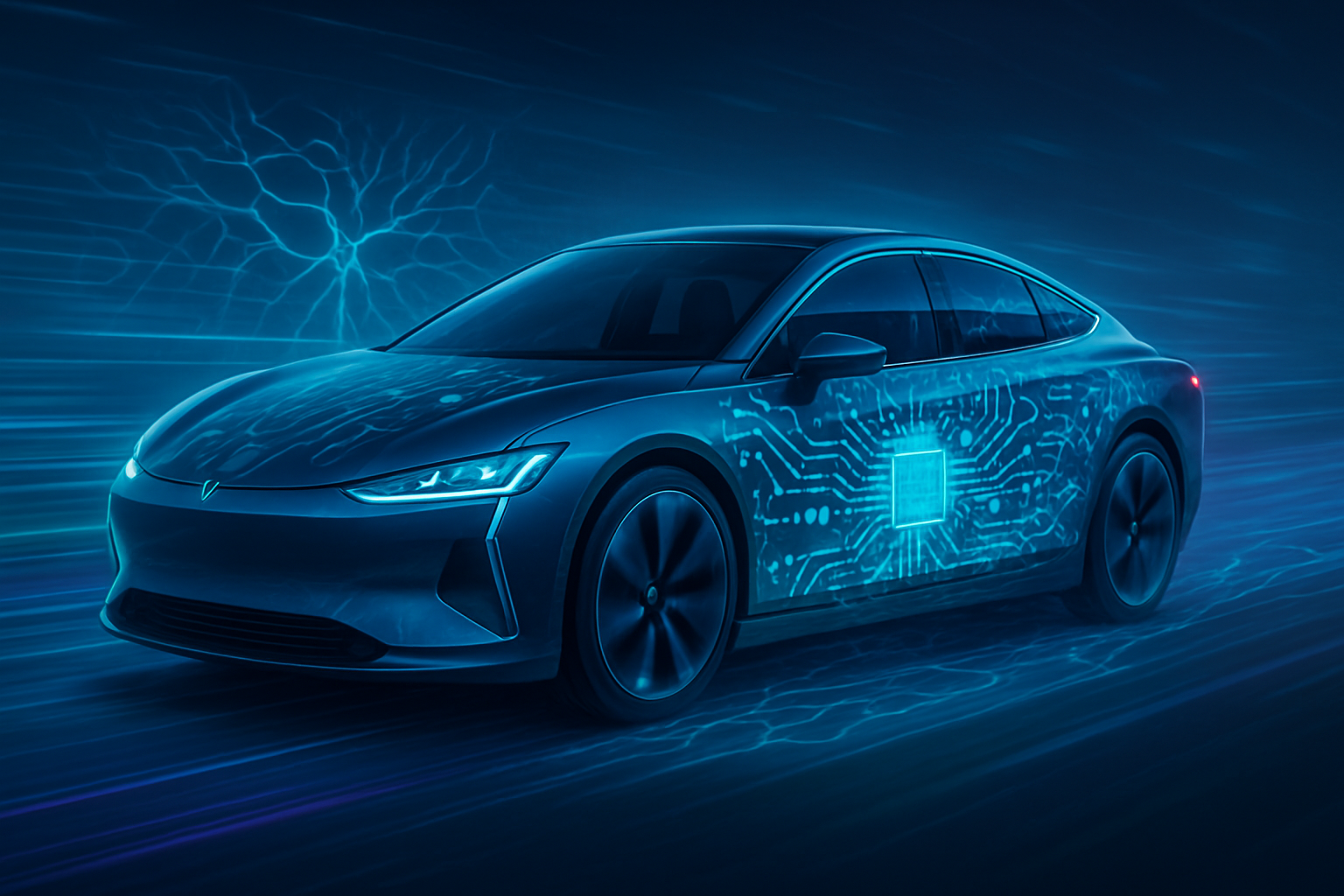General Motors (NYSE: GM) is undergoing a profound strategic overhaul of its technology divisions, signaling a significant shift in its pursuit of digital growth and innovation. The automotive giant is recalibrating its focus from the capital-intensive robotaxi business to a more disciplined and integrated approach centered on advanced driver-assistance systems (ADAS), proprietary in-vehicle software, and pervasive AI integration. This restructuring, marked by executive leadership changes and a consolidation of tech operations, underscores a broader industry trend where traditional automakers are transforming into software-driven mobility providers, aiming for greater efficiency and a more direct control over the customer experience.
The immediate significance of GM's pivot is multi-faceted. It reflects a re-evaluation of the timelines and profitability of fully autonomous robotaxi services, especially in the wake of the highly publicized incident involving its Cruise subsidiary in late 2023. By redirecting resources, GM aims to accelerate the development and deployment of advanced features in personal vehicles, promising tangible benefits to consumers sooner while bolstering its long-term revenue streams through subscription services and software-defined functionalities. This move also highlights the increasing pressure on major corporations to demonstrate clear pathways to profitability in their ambitious tech ventures, balancing innovation with financial prudence.
A Deep Dive into GM's Tech Transformation: From Robotaxis to Integrated Intelligence
GM's strategic restructuring is a comprehensive effort touching several critical technological pillars. At its core is a significant recalibration of its autonomous driving strategy. The company has publicly scaled back its ambition for a large-scale robotaxi business, instead refocusing Cruise's development on advanced driver-assistance systems (ADAS) and autonomous features destined for personal vehicles. This involves increasing GM's stake in Cruise to over 97% and integrating Cruise's technical teams directly into GM's ADAS development. The goal is to expand the reach of hands-free driving technologies like Super Cruise and eventually introduce "eyes-off" driving capabilities in personal vehicles by 2028, starting with models like the Cadillac ESCALADE IQ electric SUV. This contrasts sharply with the previous approach of developing a separate, high-cost robotaxi service, signaling a pragmatic shift towards more scalable and immediately deployable autonomous solutions for the mass market.
The Software and Services organization has also seen substantial changes, including the consolidation of software engineering and global product units into a single organization under newly appointed Chief Product Officer Sterling Anderson. This streamlining aims to accelerate the development and delivery of in-vehicle experiences, with GM's proprietary Ultifi software platform remaining a central focus. Ultifi is designed to enable over-the-air updates, new applications, and subscription services, transforming the vehicle into an evolving digital platform. Furthermore, GM is integrating conversational AI powered by Google's Gemini technology into its vehicles starting in 2026, alongside developing its own proprietary GM AI tailored to drivers. This dual approach to AI, combining external partnerships with in-house development, demonstrates a commitment to advanced intelligent features within the vehicle ecosystem.
Beyond autonomous driving and in-vehicle software, GM is also consolidating its IT footprint, with the closure of its Georgia IT Innovation Center by the end of 2025, following a similar closure in Arizona in 2023. These moves are aimed at enhancing collaboration, improving efficiency, and optimizing technical resources, especially as AI reshapes the workforce. Looking ahead, GM plans to introduce a new centralized computing platform in 2028, beginning with the Cadillac ESCALADE IQ. This platform is envisioned to revolutionize vehicle design and functionality by integrating propulsion, steering, and infotainment into a unified, high-speed computing system, promising lower costs and enabling more advanced software features. This holistic approach to restructuring, encompassing hardware, software, and AI, represents a fundamental re-engineering of GM's technological backbone.
Competitive Ripples: Reshaping the AI and Automotive Landscape
General Motors' strategic pivot has significant competitive implications across the AI and automotive industries. Companies heavily invested in the robotaxi space, such as Waymo (a subsidiary of Alphabet (NASDAQ: GOOGL)) and Amazon's (NASDAQ: AMZN) Zoox, will face a shifting landscape. While GM's retreat from large-scale robotaxi operations might reduce one competitor, it also underscores the immense technical and financial challenges of achieving profitability in that sector, potentially prompting other players to reassess their own strategies or timelines. Conversely, companies specializing in ADAS technologies, such as Mobileye (NASDAQ: MBLY) or NVIDIA (NASDAQ: NVDA) with its DRIVE platform, could see increased demand as automakers like GM double down on advanced features for personal vehicles.
For tech giants, GM's deepening integration of AI, particularly with Google's (NASDAQ: GOOGL) Gemini, highlights the growing influence of big tech in the automotive sector. This partnership demonstrates how traditional automakers are increasingly relying on established AI and cloud providers to accelerate their digital transformation, rather than building every component in-house. This could intensify competition among tech companies to secure similar deals with other major car manufacturers. Startups in the in-vehicle software and AI application space also stand to benefit, as GM's Ultifi platform aims to create an open ecosystem for new services and features, potentially opening doors for smaller innovators to integrate their solutions into millions of vehicles.
The restructuring also reflects the ongoing challenge for traditional automakers to attract and retain top-tier Silicon Valley tech talent. High-profile departures from GM's AI and software leadership, including the company's first Chief Artificial Intelligence Officer Barak Turovsky, indicate the difficulties of integrating agile tech cultures into established corporate structures. This ongoing talent war will likely continue to shape the competitive landscape, with companies that successfully bridge this cultural divide gaining a significant strategic advantage in the race to develop software-defined vehicles and AI-powered mobility solutions.
Broader Implications: The Software-Defined Vehicle Era Solidifies
GM's strategic restructuring is a powerful testament to the broader industry trend of the "software-defined vehicle" (SDV) becoming the new paradigm. This shift signifies that a vehicle's value is increasingly determined not just by its hardware and performance, but by its digital capabilities, connectivity, and the intelligence it offers through software and AI. GM's commitment to its Ultifi platform and a centralized computing architecture by 2028 positions it firmly within this trend, aiming to unlock new revenue streams through subscription services, personalized experiences, and continuous over-the-air updates. This move also reflects a growing recognition among traditional automakers that they must become software companies first and foremost to remain competitive.
The impacts extend beyond the automotive sector, influencing the wider AI landscape. GM's decision to scale back robotaxi ambitions, while still pursuing advanced autonomy for personal vehicles, underscores a pivot in AI investment from highly specialized, capital-intensive "moonshot" projects towards more scalable and immediately applicable AI solutions. This could encourage a broader industry focus on ADAS and in-car AI, which offer clearer pathways to commercialization and profitability in the near term. Potential concerns include the consolidation of power among a few large tech and automotive players, and the challenge of ensuring data privacy and cybersecurity as vehicles become increasingly connected and intelligent. However, this strategic move by GM, alongside similar efforts by rivals like Ford (NYSE: F) and Volkswagen (XTRA: VW), marks a significant milestone in the evolution of AI applications, moving from niche research to widespread consumer integration.
This strategic realignment by GM also draws comparisons to previous AI milestones. Just as deep learning breakthroughs shifted the focus from symbolic AI to neural networks, the current industry recalibration in autonomous driving signals a maturation of expectations. It's a move from the initial hype cycle of full Level 5 autonomy to a more pragmatic, incremental approach, prioritizing robust and safe Level 2 and Level 3 ADAS features that can be deployed at scale. This measured approach, while potentially slower in achieving full autonomy, aims to build consumer trust and generate revenue to fund future, more advanced AI research and development.
The Road Ahead: Navigating AI's Automotive Horizon
Looking ahead, the near-term and long-term developments stemming from GM's restructuring are poised to reshape the automotive experience. In the near term, consumers can expect an acceleration in the rollout of advanced ADAS features across GM's vehicle lineup, with a strong emphasis on enhancing safety and convenience through technologies like expanded Super Cruise capabilities. The integration of Google's Gemini-powered conversational AI by 2026 will also bring more sophisticated in-car voice assistants, promising a more intuitive and personalized user interface. The focus will be on demonstrating tangible benefits of these software-driven features, encouraging adoption of subscription services, and establishing Ultifi as a robust platform for continuous innovation.
Longer term, the introduction of GM's new centralized computing platform by 2028 is expected to be a game-changer. This architecture will enable a deeper integration of AI across all vehicle functions, from predictive maintenance and energy management to highly personalized infotainment and autonomous driving. Potential applications include vehicles that can learn driver preferences, optimize routes based on real-time conditions and personal schedules, and even offer health and wellness monitoring. Experts predict a future where vehicles are not just modes of transport but intelligent, connected companions that evolve over their lifespan through software updates.
However, significant challenges remain. Attracting and retaining top software and AI talent will continue to be critical, as will ensuring the robustness and security of increasingly complex software systems. The regulatory landscape for autonomous features is also evolving, requiring continuous adaptation. What experts predict next is a fierce battle for software differentiation among automakers. The success of GM's pivot will hinge on its ability to execute flawlessly on its Ultifi platform, deliver compelling AI-powered experiences, and effectively integrate its revamped Cruise unit into its broader ADAS strategy, all while maintaining financial discipline in its ambitious EV rollout.
Charting a New Course: GM's Defining Moment in AI History
General Motors' strategic restructuring represents a pivotal moment not just for the company, but for the broader AI and automotive industries. The key takeaways are clear: the era of the software-defined vehicle is here, the pursuit of AI-driven mobility requires a disciplined and integrated approach, and traditional automakers are aggressively transforming to compete in a tech-first world. GM's shift away from a pure robotaxi focus towards a more integrated ADAS and in-vehicle software strategy is a pragmatic response to market realities and technological maturity.
This development holds significant historical weight, marking a maturation in the application of AI to complex real-world problems. It signals a move beyond the initial "move fast and break things" ethos often seen in tech startups, towards a more considered, safety-first, and revenue-driven deployment of AI in mission-critical systems like automobiles. The long-term impact will likely be a profound reshaping of how vehicles are designed, purchased, and experienced, with software and AI becoming central to brand identity and customer loyalty.
In the coming weeks and months, industry watchers will be closely monitoring GM's execution of its Ultifi strategy, the progress of its integrated ADAS development, and the market reception to its new AI-powered features. The success of this ambitious pivot will not only determine GM's future trajectory but will also provide a crucial blueprint for how other major corporations navigate the complex and rapidly evolving landscape of artificial intelligence and digital transformation.
This content is intended for informational purposes only and represents analysis of current AI developments.
TokenRing AI delivers enterprise-grade solutions for multi-agent AI workflow orchestration, AI-powered development tools, and seamless remote collaboration platforms.
For more information, visit https://www.tokenring.ai/.








